Introduction
We present here our based prism low resolution spectrograph baptized BESOS or BEst Simple Optical Spectrograph (kisses in spanish). Designed in 2003, the spectrograph was proposed to overcome the low throughput of our previous instrument LOROS (coming soon to this blog) which was an instrument based on an on-axis dispersion prism obtained from a commercial spectroscope. The total efficiency of LOROS was only 25% in the visible spectral range. BESOS was built with only two doublets and a prism. This configuration reached almost 87 % at 620 nm. With such efficiency and low resolution, we expected to measure the red shift of the most bright galaxies and quasars.
In this post we provide a description of the instrument, features, performances and the set of mechanical drawings.
Optical design
The Figure below shows the optical design of BESOS. The description of the elements is given in the Table below. The prism works at the minimum deviation and for this configuration the incidence and refracted angle to the input and output prism surface is 59.6960º respectively.
Two LINOS (now Qioptiq) doublets were chosen as collimator and objective respectively. An equilateral 60º prism from Edmund Optics was used as disperser. The image quality at 400, 550 and 700 nm is illustrated in the following Figure. The square is 20 μm side. The images for these 3 wavelengths were optimized to have their minimum spot size perpendicular to the dispersion.
Technical data
| Instrument | Prism spectrograph |
||||||||||||
| Name | BESOS (BEst Simple Optical Spectrograph) | ||||||||||||
| Description | Low resolution spectrograph based on an equilateral prism | ||||||||||||
| Slit | Ni plate Ø 10 mm, 25 µm thick, centered slit:25 µm width, 2 mm long. Labelcomat (B) | ||||||||||||
| Collimator | Doublet f = 30 mm, Ø 12.5 mm, external mount. Ø 25 mm. Linos ref. G052008000. Glass: SF18. Coated: ARB2 VIS | ||||||||||||
| Prism | Dispersion prism. Material SF18, 15x15mm. AR coating. Edmund Scientific Ref U43-494 | ||||||||||||
| Objective | Doublet f = 40 mm, Ø 12.5 mm, external mount. Ø 25 mm. Linos ref. G052010000. Glass: SF18. Coated: ARB2 VIS | ||||||||||||
| Telescope interface | Standard 1.25” tube. | ||||||||||||
| Camera interfaces | T2 thread | ||||||||||||
| Eye piece. | f = 20 mm, standard barrel Ø 1.25”, with extender15 mm, Ø 1.25” (included). For direct spectrum or slit observation | ||||||||||||
| Slit illumination | Red LED, 10 mA. | ||||||||||||
| Power supply | Battery 12 V Model MN21/A23/K23A/LRV08 | ||||||||||||
| Slit viewer lens | Doublet f = 30 mm, Ø 12.5 mm, external mount Ø 25 mm. Linos ref. 063130 | ||||||||||||
| Slit viewer interface | Internal tube standard Ø 1.25” | ||||||||||||
| Total transmission (without CCD) |
|
| CCD test camera | SBIG ST-7 XMEI, KAF-0401E 756×510, 9×9µm | ||||||||
| Dispersion | 0.72 nm/pixel @ 650nm | ||||||||
| Spectral range | 362 nm – 812 nm | ||||||||
| Resolution |
|
Technical drawings
All BESOS technical drawing ara available for download in this PDF document: BesosAllDrawings
This image describe the BESOS assembly with both optical and mechanical components. The only remark worth being mentioned is that the mechanical part 3 – Folding Mirror is made enterily of black anodized aluminium except the inclined surface that has been polished till it achieved the quality of a mirror surface (probably would habe been simpler solution to glue a small mirror).
Gallery
The following photos show BESOS in different configurations
Observations
- Mallorca (Spain) .November 2003. All exposures between 1 and 120 seconds.

“BESOS: a prism spectrograph” by CAOS group is licensed under a Creative Commons Attribution-Non-Commercial-No Derivative Works 3.0 Germany License.
Based on a work at spectroscopy.wordpress.com.



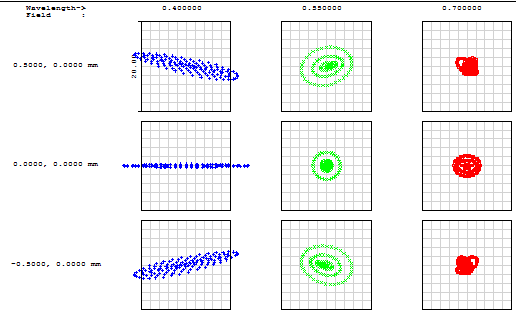
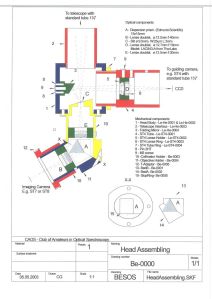
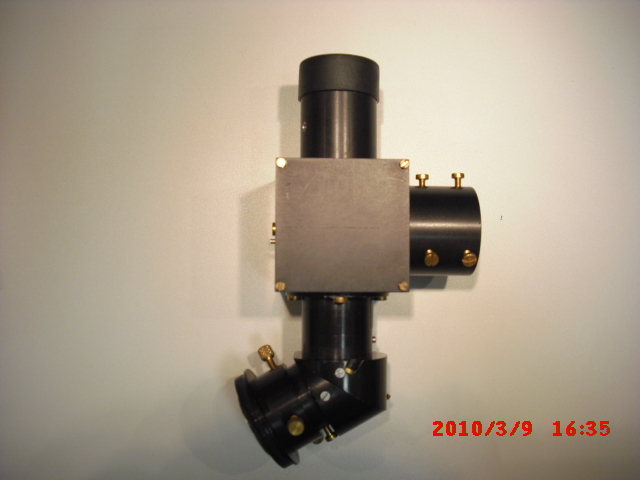
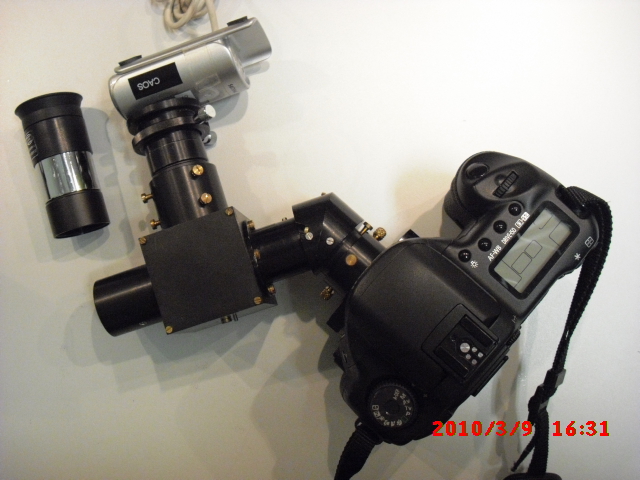




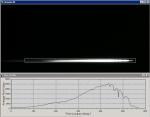
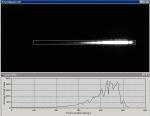
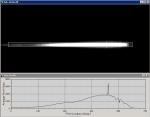
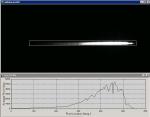
Hi CAOS group
Very Nice – just the information I needed for building a similar Faint Object Spectrograph, but using another type of prism I happen have in the drawer.
Question:
The guidehead – is the ST4 parts stock or specialmade?
Keep posting please.
Dear Frank,
The guidehead of BESOS is specialmade, but simple to redesign to adapt it to your needs.
BESOS was one of our first designs. In those day we were very fortunate to count with a mechanical workshop that could make us any part we wished. These days are gone.
If I had to redesign BESOS again, I would replace the guiding port of the guidehead (that is, parts 4,5,6 and 7 in our Assembly drawing) with just single part with an internal 1.25″ tube. I would then fix a f/20mm lens to a webcam with an 1.25″ adapter. Also part 3 (folding mirror) could be replaced with a simpler part with just a small mirror glued to it and the whole screwed/glued to the head wall.
Hope it helps Cheers Carlos PS. Stay tuned, there are new articles coming soon to our blog.
Dear sir, i am also interested to build a prism based spectrometer, can you assit to get a start?
M.elmas@planet.nl
The netherlands
Mechanical drawings for BESOS construction are available at:
Click to access besos_drawings.pdf
Hi, Carlos.
I just finished building the slit spectrograph from your drawings.Now, how is the best way to test and align the whole setup,simulating actual use? Maybe a red LED. Using a green laser pointer seem to bright.
Any suggestions would be appreciated.
Thanks.
Gary
Hi Gary,
Congratulations with
The only adjustment you need is to set the collimator lens in collimation with the slit, this is the slit must be located at the focal distance of the lens, with the most curved surface towards the prism. To achieve the focal position observe the image of the slit by setting another calibrated collimator, e.g. a DSLR camera with a photo-objective at infinite (check infinite position by focusing e.g. the moon) and displace the BESOS collimator lens until you achieve the sharpest image of the slit in the DSLR. Fix the position of the collimator and continue mounting BESOS. That’s all.
Remember, both lenses collimator and objective must have the most curved surface towards the prism.
Hope it helps
Carlos Guirao
Carlos,
Thanks for the input. Mechanically it turned out perfect, Now all I have to do is learn how to use it. I’am trying to use an LED as a light source for focusing, red and green.
Thanks again.
Gary McFall